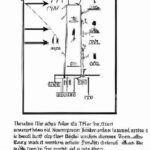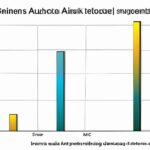The Atkinson index is an economic indicator used to measure income inequality within a population. It provides insights into the concentration of income and the distribution of wealth by taking into account both the number of individuals and the inequality of their income distribution. The index ranges from 0 to 1, with a value of 0 indicating perfect equality and a value of 1 indicating maximum inequality. By calculating the Atkinson index, policymakers and economists can assess the impact of various socio-economic policies on income distribution and make informed decisions to address inequality and promote equitable growth.
(Atkinson Index)
The Atkinson index is an economic measure used to evaluate income inequality within a society. It provides insight into the distribution of wealth by quantifying the level of inequality among individuals. The index is named after economist Anthony Barnes Atkinson, who developed it in 1970. The Atkinson index takes into account the income distribution of a population and assesses how far it deviates from an ideal state of perfect equality. It incorporates the concepts of social welfare and fairness by penalizing income disparities. The index is calculated using two key components: the mean income (average income per person) and the inequality aversion parameter, denoted by “ε.” The parameter ε determines the level of sensitivity towards inequality, with higher values indicating greater aversion to inequality. The Atkinson index is calculated as follows: 1. Sort the income data from lowest to highest. 2. Calculate the mean income for the population. 3. For each individual, compute the Atkinson-weighted income by applying the inequality aversion parameter ε, where ε is greater than zero but less than one. 4. Sum the Atkinson-weighted incomes for all individuals. 5. Divide the sum of Atkinson-weighted incomes by the mean income to obtain the Atkinson index. A higher Atkinson index indicates a higher degree of income inequality, while a lower index reflects a more equitable distribution of income. The index can range from zero to one, where zero value represents perfect equality, and a value of one signifies extreme inequality. The Atkinson index has become widely used in economic research and policymaking to assess income inequality and advocate for more equitable distribution of wealth. By quantifying inequality, policymakers and economists can better understand social welfare implications and design policies that address and mitigate income disparities within a society.Applications
The Atkinson index, named after economist Anthony B. Atkinson, is a measure of income inequality within a population. While it primarily provides a measure of inequality, it also has various applications in different fields. Let’s explore some of the significant applications of the Atkinson index. 1. Economic Policy Analysis: The Atkinson index helps policymakers and economists evaluate the impact of different policies on income inequality. By comparing the Atkinson index before and after policy changes, they can assess whether the implemented measures have effectively reduced or increased income inequality. 2. Poverty Measurement: The Atkinson index complements traditional poverty measures by providing a more comprehensive analysis of income distribution. It quantifies the extent to which income is concentrated among the wealthiest segments of society, complementing poverty statistics and helping policymakers develop targeted poverty alleviation strategies. 3. Welfare Analysis: The Atkinson index allows for a deeper understanding of the welfare implications of income inequality. By considering the inequality aversion parameter, policymakers can assess the trade-offs between aggregate welfare and income inequality. This analysis is crucial in designing redistributive policies that strike a balance between promoting overall welfare and reducing income disparities. 4. Global Income Inequality: The Atkinson index is not limited to national income inequality analysis; it can also be applied to study global income disparities. By incorporating data from different countries, it helps identify whether income inequalities are increasing or decreasing on a global scale. This insight is vital for international organizations and policymakers working towards more equitable economic development worldwide. 5. Health and Social Studies: The Atkinson index can be used to explore the relationship between income inequality and health outcomes or social indicators. Researchers can investigate how the concentration of income among the wealthiest affects access to healthcare, education, and social services. This analysis provides valuable insights for public health policies and social development initiatives. 6. Tax and Transfer Policies: The Atkinson index assists in assessing the effectiveness of tax and transfer systems in reducing income inequality. Governments can use this index to evaluate different tax and transfer policies, making adjustments to promote fairness and social justice. 7. Comparative Analysis: The Atkinson index enables comparisons of income inequality across different populations or regions, helping identify disparities and similarities. This information is especially valuable for cross-country studies aiming to understand the drivers of income inequality and design appropriate policy responses. In summary, the Atkinson index has a wide range of applications in economic policy analysis, poverty measurement, welfare analysis, global income inequality studies, health and social studies, tax and transfer policies, and comparative analysis. By providing insights into income distribution patterns, this index helps policymakers and researchers make informed decisions to promote more equitable societies.
Calculation Method
The calculation method of the Atkinson index aims to quantify income inequality within a particular population. Developed by economist Anthony B. Atkinson, this index provides a numerical representation of how income is distributed among individuals or households in a given society or economy. To calculate the Atkinson index, several steps are involved. Firstly, individual or household income data is required, typically obtained from surveys or official statistics. Income can be measured in various ways, such as gross income, disposable income, or after-tax income. Once the income data is gathered, the next step is to determine the inequality aversion parameter, denoted by ε. This parameter reflects society’s preference for inequality reduction, with higher values indicating a stronger preference for reducing inequality. A commonly used value for ε is 1, which implies equal weight is given to all individuals. The Atkinson index calculation begins by ranking all individuals or households in ascending order based on their income levels. The cumulative proportion of individuals with incomes above a particular threshold is then calculated for each threshold. These proportions are known as the Lorenz curve. The Atkinson index is derived from the difference between the theoretical perfectly equal income distribution and the observed distribution reflected by the Lorenz curve. It measures the amount of potential total income that society would have to sacrifice to achieve perfect equality. The formula for the Atkinson index is as follows: A(ε) = 1 – [1 / (μ^(1-ε) * n)] * ∑[(y_i / μ)^ε] Where A(ε) represents the Atkinson index for a given value of ε, μ denotes the average income in the population, n is the total number of individuals or households, and y_i represents the income of each individual or household. The Atkinson index output ranges from 0 to 1. A value of 0 indicates perfect equality, meaning that all individuals or households have the same income. Conversely, a value of 1 signifies complete inequality, where all income is concentrated in the hands of a single individual or household. By using the Atkinson index, policymakers and researchers can quantify income inequality and monitor its changes over time. This information can provide valuable insights into the distribution of wealth and opportunities within a society, allowing for the identification of areas where interventions may be needed to address inequality and promote economic fairness.
Interpretation
Interpretation of the Atkinson index involves understanding the meaning and implications of the measure in relation to income inequality. The index is commonly used to measure the distribution of income within a society, and its interpretation provides insights into the level and extent of inequality present. When interpreting the Atkinson index, it is important to note that the measure ranges from zero to one. A value of zero indicates perfect equality, where all individuals in a society have an equal share of the total income. On the other hand, a value of one represents extreme inequality, where one individual holds all the income and the rest have none. Intermediate values between zero and one reflect various degrees of income inequality. A higher Atkinson index value indicates a higher level of income inequality within a society. This means that a larger proportion of total income is concentrated in the hands of a few individuals, while a significant portion of the population receives a relatively smaller share of income. Conversely, a lower Atkinson index value suggests a more equitable distribution of income, with a smaller gap between the rich and the poor. The interpretation of the Atkinson index can vary depending on the context and the specific value obtained. For example, if the index value is relatively low (close to zero), it may suggest a society with a more equal distribution of income and potentially better overall welfare. Policies and interventions aimed at reducing income disparities may have been successful in such a society. On the other hand, a high Atkinson index value (close to one) may indicate a society with substantial income inequality, implying potential social and economic challenges. The interpretation of the Atkinson index can further be enriched by comparing different societies or groups within a society. Comparing the index values across countries or regions can provide insights into relative levels of income inequality and guide policymakers in understanding the successes or failures of their distributional policies. Similarly, examining the Atkinson index for different income groups within a society can shed light on the disparities between the rich and the poor, and influence targeted policy interventions. It is important to note that the Atkinson index, like any other statistical measure, has its limitations. It focuses solely on income distribution and may not capture other dimensions of inequality such as wealth, education, or social class. Additionally, the index relies on assumptions regarding individual preferences and the ethical considerations inherent in the measurement of inequality. In conclusion, interpreting the Atkinson index involves understanding the level and extent of income inequality within a society or group. The index allows for comparisons, both across different societies and within a society, providing valuable insights for policymakers and researchers alike. By examining the Atkinson index, one can gauge the distributional characteristics of income and assess the impact of policies aimed at reducing inequality.
Limitations
The Atkinson index is a well-known measure used to analyze income inequality within a society. While it provides valuable insights into the distribution of income, it is important to be aware of its limitations. Understanding these limitations is crucial for a comprehensive analysis and interpretation of the index. One of the primary limitations of the Atkinson index is its sensitivity to changes in the income distribution at the top end. Since the index gives more weight to individuals with higher levels of income, it may not fully capture the inequality among low-income individuals. Consequently, the index might not accurately reflect the experiences of the most economically vulnerable segments of the population. Furthermore, the Atkinson index is based solely on income and does not take into consideration other important indicators of well-being, such as education, healthcare, or access to basic services. This limited scope can potentially lead to an incomplete understanding of inequality within a society. It is important to consider a broader range of factors to gain a more comprehensive view of the overall well-being of a population. Another limitation of the Atkinson index is its inability to distinguish between different sources of income. This means that it treats all types of income equally, regardless of whether they are derived from labor, capital gains, or inheritances. By failing to account for the origin of income, the index may overlook complexities in the underlying sources of inequality and fail to identify potential policy interventions that could address specific areas of concern. Additionally, the Atkinson index assumes that individuals have identical preferences for income inequality. In reality, people may have different values and preferences when it comes to income distribution. By assuming homogeneity in preferences, the index may not fully capture the subjective experiences and perspectives of different individuals within a society. Lastly, the Atkinson index is a static measure of income inequality, which means it provides a snapshot of inequality at a particular point in time. It does not account for changes in income distribution over time, making it less suitable for analyzing trends and dynamics in inequality. To fully understand the evolving nature of income inequality, it is important to supplement the Atkinson index with other dynamic measures. In conclusion, while the Atkinson index is a useful tool for analyzing income inequality, it has certain limitations that need to be considered. These limitations include its sensitivity to the top end of the income distribution, the narrow focus on income as the sole indicator, the inability to distinguish different sources of income, the assumption of identical preferences, and its static nature. By being aware of these limitations, researchers and policymakers can employ a more comprehensive approach and consider additional measures to gain a deeper understanding of inequality and design effective interventions.
Overview
The overview of the Atkinson index encompasses a comprehensive understanding of this economic indicator and its relevance in measuring income inequality. The Atkinson index, named after economist Anthony B. Atkinson, is a statistical measure used to assess income inequality within a given population. The primary purpose of the Atkinson index is to provide policymakers, researchers, and economists with a tool to quantify the level of income distribution inequality. By analyzing how income is distributed across a population, the Atkinson index offers insights into the extent of economic disparities within a society. Unlike other commonly used inequality measures, such as the Gini coefficient, which measures inequality from the perspective of society as a whole, the Atkinson index places more weight on the welfare of the poor. It takes into account the diminishing marginal utility of income, recognizing that an extra dollar holds greater value for individuals with lower incomes compared to those with higher incomes. The Atkinson index is calculated by applying a parameter, denoted as ε, which represents society’s level of inequality aversion. By varying the value of ε, one can assess how different degrees of inequality aversion impact the index’s results. Higher values of ε indicate a higher aversion to inequality, while lower values imply a greater tolerance for disparities in income distribution. A notable feature of the Atkinson index is that it allows for comparisons between different populations, regions, or time periods. This enables analysts to study how income inequality has evolved and to identify trends and patterns within various social and economic contexts. The index provides a single summary statistic that quantifies income inequality, making it a valuable tool for policymakers seeking to evaluate the effectiveness of policies aimed at reducing inequality. By monitoring changes in the Atkinson index over time, policymakers can gauge the impact of their interventions, leading to evidence-based decision-making. However, like any statistical measure, the Atkinson index has certain limitations. It relies heavily on accurate and comprehensive data on income distributions, which may be difficult to obtain in certain contexts. Additionally, it does not capture other dimensions of inequality, such as wealth or social disparities, which are also important indicators of overall inequality within a society. In conclusion, the overview of the Atkinson index highlights its significance in understanding income inequality. This statistical measure provides valuable insights into the distribution of income within a population, placing an emphasis on the welfare of the poor. Understanding the Atkinson index empowers policymakers, researchers, and economists to assess and address the challenges posed by income inequality effectively.













